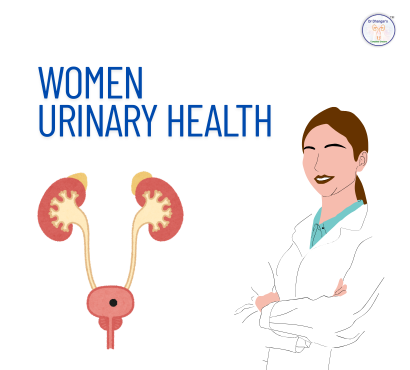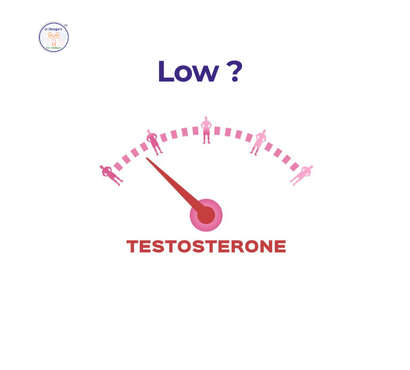1. Why Urinary Health Deserves Women’s Focus
Women face unique risks for urinary discomfort, infections, and leakage—yet these issues often stay unspoken. In India and globally, nearly 50% of women experience at least one urinary tract infection, and a significant number face stress or urge incontinence. These conditions affect daily life, emotional well-being, and health habits. The good news? Most are preventable or treatable with lifestyle care and pelvic support.
2. Common Concern: Urinary Conditions in Women
A. Urinary Tract Infection (UTI)
- Symptoms: Frequent urge to urinate, burning, cloudy or strong-smelling urine, discomfort low down
- Why it happens: Short urethra + close proximity to bacterial sources make women more vulnerable
- Repeat infections: Common unless habits change
B. Incontinence
- Stress incontinence: Leakage during coughing, laughing, exercise
- Urge incontinence: Strong need to pee with little warning
- Mixed type: Both stress and urge symptoms
C. Pelvic Organ Support Issues
- Weak pelvic floor may lead to bladder pressure, dragging sensations, or discomfort—often postpartum or with age
D. Bladder Pain / Interstitial Cystitis
- Persistent bladder-related pain and frequent trips to the bathroom, even when tests appear normal
3. Why Women Are at Higher Risk
- Anatomy: Short urethra provides an easy bacterial path compared to men
- Life stages: Pregnancy, childbirth, menopause alter pelvic structure and hormones
- Lifestyle: Inadequate hydration, prolonged urine holding, and certain hygiene practices add risk
- Cultural factors: Avoidance of public toilets or dehydration due to social settings
4. Everyday Habits to Support Urinary Health
A. Hydration & Bladder Timing
- Drink 1.5–2 L of water daily (adjust for weather and activity)
- Use the “void every 3–4 hours” rule to avoid pressure and discomfort
- Allow complete bladder emptying—don’t rush or double-void
B. Wiping & Hygiene
- Always clean from front to back after using the toilet
- Choose cotton underwear, change if sweaty or wet
- Avoid strong soaps or perfumed products near the urethra
C. Clothes & Lifestyle
- Prefer loose breathable clothing
- Change out of wet workout clothing or swimwear promptly
- Avoid tight bottoms or synthetic fabrics that trap moisture
D. Toilet Etiquette & Travel Tips
- Choose cleaner facilities when out; carry personal hygiene wipes
- Avoid holding urine to reduce infection risk
- Use portable slippers or covers if necessary
5. Nourish From Within: Diet & Herbal Support
A. Digestive Support
- High-fiber diet (fruits, vegetables, whole grains) helps prevent constipation, which strains the bladder
- Fermented foods like curd and lightly fermented pickles promote beneficial microbes
B. Targeted Support
- Cranberry drinks (unsweetened) may reduce bacteria sticking
- Avoid caffeine, alcohol, and spicy foods that can irritate
- Minimize sugar and artificial sweeteners to reduce sugar-related bladder disruption
6. Strengthening the Foundation: Pelvic Floor Care
Why It Matters
Healthy pelvic muscles support bladder control, reduce leakage, and ease pressure.
Simple Practice: Kegel Training
- Sit comfortably, identify pelvic muscles by holding urine (then releasing) or sensing contraction
- Routine: 10 slow squeezes (5 seconds each) + 10 quick squeezes, three times daily
Progress Tracking
- Use reminders or smartphone alerts
- Practice during everyday activities—without interrupting urine
- Track subtle improvements in control
Troubleshooting
- If techniques are hard, try blocks under the pelvis or gentle abdominal bracing
- In cases of persistent symptoms, guided support (biofeedback) can be helpful
7. When to See a Medical Professional
Seek help if you experience:
- Fever, chills, pain during urination
- Blood in urine
- Frequent UTIs (3+ in a year)
- Incontinence that affects sleep, confidence, or daily function
- Bladder pressure, heaviness, or pain lasting over six weeks
Early care leads to effective treatment—especially for prolapse, persistent infections, or pelvic floor issues.
8. Treatment Pathways & Support Options
A. For UTIs
- Antibiotics prescribed based on symptoms
- Delayed or minimal use only when confirmed infection
- Habit changes often reduce recurrence
B. For Incontinence
- Pelvic training is first-line
- Review fluid intake and bladder habits
- Consider lifestyle evaluation
- Non-surgical supports like vaginal cones or pessaries may help
C. Bladder Pain Troubles
- Bladder training with scheduled bathroom visits
- Calming routines for bladder spasms (warm baths, timed voiding)
- Adjusting diet and fluid triggers
Rehabilitation therapy often integrates across these needs—from pelvic muscle strengthening to bladder awareness.
9. Daily Routine for Urinary Strength
Daily Urinary Wellness Plan
– Hydration: 1.5–2 L water spaced out
– Bathroom timing: Void every 3–4 hours
– Pelvic workouts: Kegel sets throughout day
– Diet: Fiber-rich, probiotic foods, avoid irritants
– Hygiene: Front-to-back wiping, cotton wear
– Mental breaks: Take restroom as needed, avoid delay
10. Why Early Action Matters
- Prevents repeated infections and discomfort
- Strengthens muscles needed for childbirth, aging, and daily life
- Builds confidence, reduces anxiety around leakage
- Avoids long-term complications like prolapse or urinary stones
Urinary health is fundamental to a woman’s quality of life—from comfort to confidence. By embracing simple habits like hydration, hygiene, pelvic strengthening, timely bathroom use, and healthy diet, women in India can protect themselves against common urinary concerns. Early action, awareness, and pelvic care create lasting benefits—supporting everyday wellbeing and resilience.
FAQs
Q1. How quickly do Kegels work for incontinence?
Many women notice better bladder control in 4–6 weeks with regular practice. Noticeable improvements often appear around three months.
Q2. Can cranberry products prevent UTIs effectively?
Unsweetened cranberry juice might help reduce bacteria sticking to the bladder wall—not a cure, but a useful preventive alongside good habits.
Q3. Is it normal to leak when coughing or exercising postpartum?
Yes, it’s common. Regular pelvic floor exercises and gradual return to activity help—persistent issues should be evaluated by a trained therapist.




